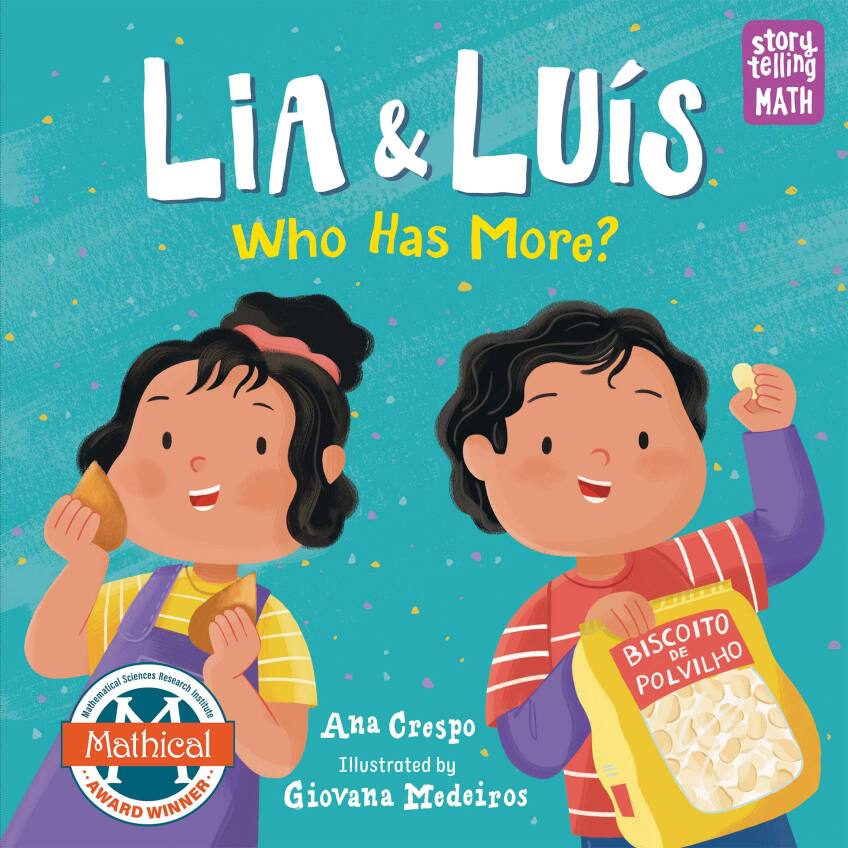How Two Brazilian American Kids Are Inspiring Little Ones to Love Math and Reading

Ana Crespo sat on the ground of the library with her young daughter, sifting through board books, drinking in the photos and words. Some of those words were new to both of them, even though Crespo started learning English when she was 12 years old. “I have a very vivid image of reading the word shovel for the very first time in my life. I didn’t know what it was called ... so I was learning with her. Just as she was learning to fall in love with books, I think I ended up falling in love as well,” Crespo recalled.
Originally from Rio de Janeiro, Brazil, Crespo moved to the United States to attend graduate school. Her interest in reading came from spending hours at the library with her daughter, attending story time library events and soaking up all the books she could. But she noticed a lack of diversity in the stories she read and had to rely on her family to send her books from Brazil with Brazilian characters written by Brazilian authors. “That’s when this idea perhaps starting to write came to mind,” Crespo said.
Fast forward several years to when an editor from Charlesbridge, an independent publisher, introduced her to a series of children’s mathematical literature called Storytelling Math. Initiated by TERC, a nonprofit organization that encourages STEM learning, the Storytelling Math series is intended to bring to light underrepresented math concepts in children’s literature and add diversity in both characters and authors. While Crespo had never expected to write stories involving math, she was immediately committed to the idea. Not only did the series aim to tell stories that involved a wider array of math concepts — more than just counting numbers and shapes — it sought to integrate diversity in both authors and characters to books.
Thus, the charming book by Crespo called “Lia & Luís: Who Has More?” was born. “What I hope happens from this series, and Lia and Luís in particular, is that parents and kids will be encouraged to see math everywhere, and most of all that kids will see themselves as mathematical thinkers,” Crespo said. “Math is not that monster that a lot of times they think it is.” The book is also available in a bilingual English and Spanish edition as "Lia y Luís: ¿Quién Tiene Más? / Lia & Luis: Who Has More?"

Little did she know that Lia and Luís would soon be able to reach lots of kids like them, thanks to a very special Zoom call.
On Feb. 9, 2021, Crespo’s book won the Mathical Book Prize in the pre-K age category. “I didn’t even know Lia & Luis was running for it. I had absolutely no idea,” Crespo said. “It was a complete surprise!”
The Mathical Book Prize is part of the National Math Festival, an event put on by the Mathematical Sciences Research Institute, along with other math organizations around the United States.
Typically, every other spring in Washington D.C., 12,000 to 20,000 kids and adults to partake in various arts, events, performances, games and activities at the festival. Leading math organizations are invited to engage with the audience and kids to grant them easy access to deep math concepts in fun and engaging ways, according to Kirsten Bohl, the National Math Festival’s project lead. “Our goal is really to inspire interest and enjoyment of math that might lead to future exploration.”
This year looked a little different for the festival. Since it was spread out throughout the school year, teachers were able to display the various events to their classrooms via online broadcast. Having the awards ceremony online allowed teachers, educators and parents to watch with their kids during the school day. Authors were selected based on their works of children’s literature that creatively integrated deeper math concepts into their stories. The categories were split into different age groups, from pre-K all the way through high school. The winning authors of each category made appearances to read excerpts from their books. Crespo’s book was just one of many great others.
What I hope happens from this series, and Lia and Luís in particular, is that parents and kids will be encouraged to see math everywhere, and most of all that kids will see themselves as mathematical thinkers ... Math is not that monster that a lot of times they think it is.Ana Crespo
More than just engaging children in everyday math, the book shows young people of color, or who grew up in a multilingual homes, characters who are like them. In the story, Lia and Luís interact with each other by switching from Portuguese to English, something Crespo said her kids often did. “Considering the reason for the series, I purposefully made them Brazilian American. I wanted kids, like my kids, who are Brazilian American, to see themselves in a book.”
Bohl reminisced about how the book reminded her of her own childhood, arguing with her sister about whose snack was bigger and better. “It’s a very playful, colorful and engaging story,” Bohl said. “It’s part of a series … that is focused on protagonists showing young people of color to young people of color, along with the math. And that adds an important dimension.”



